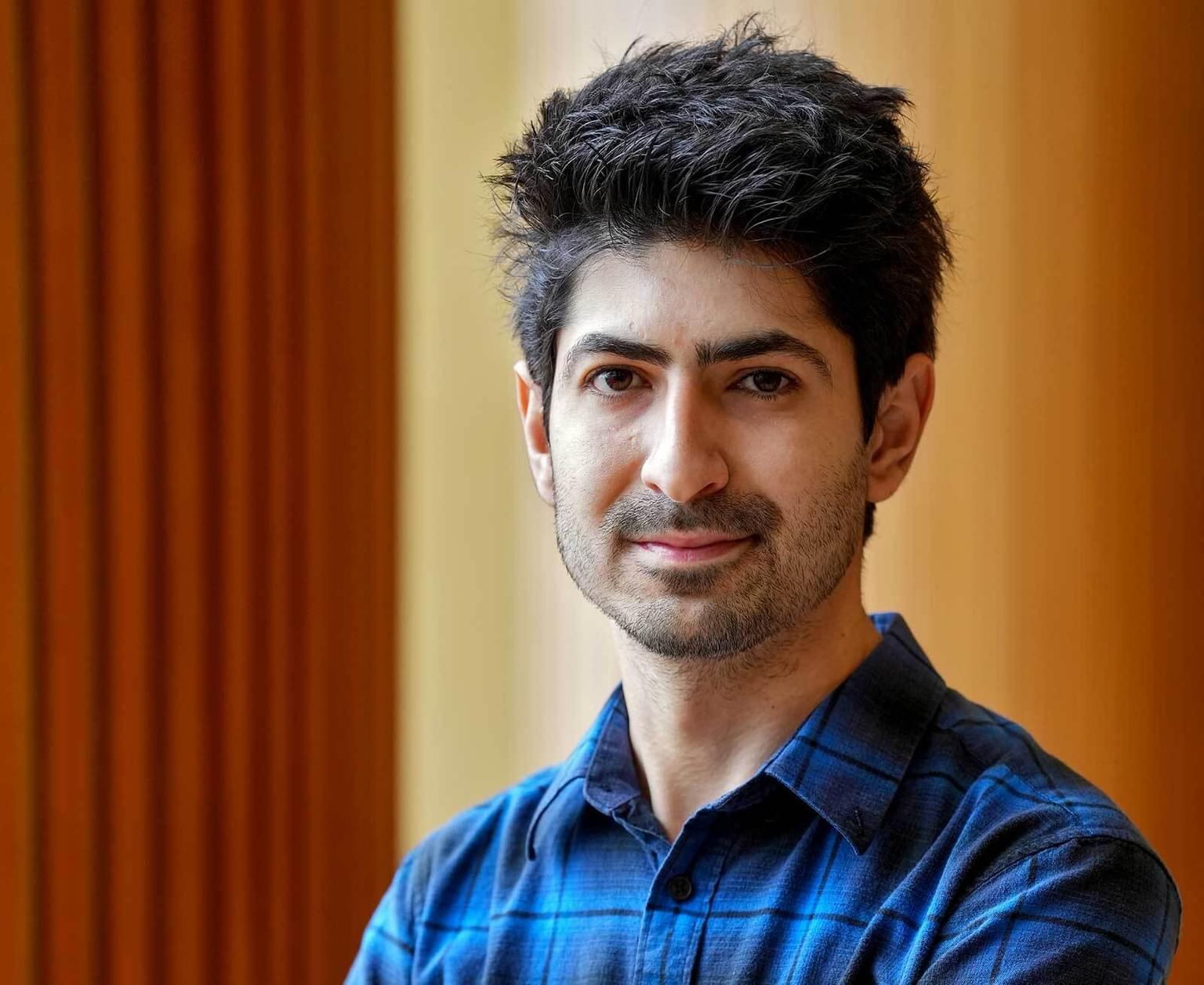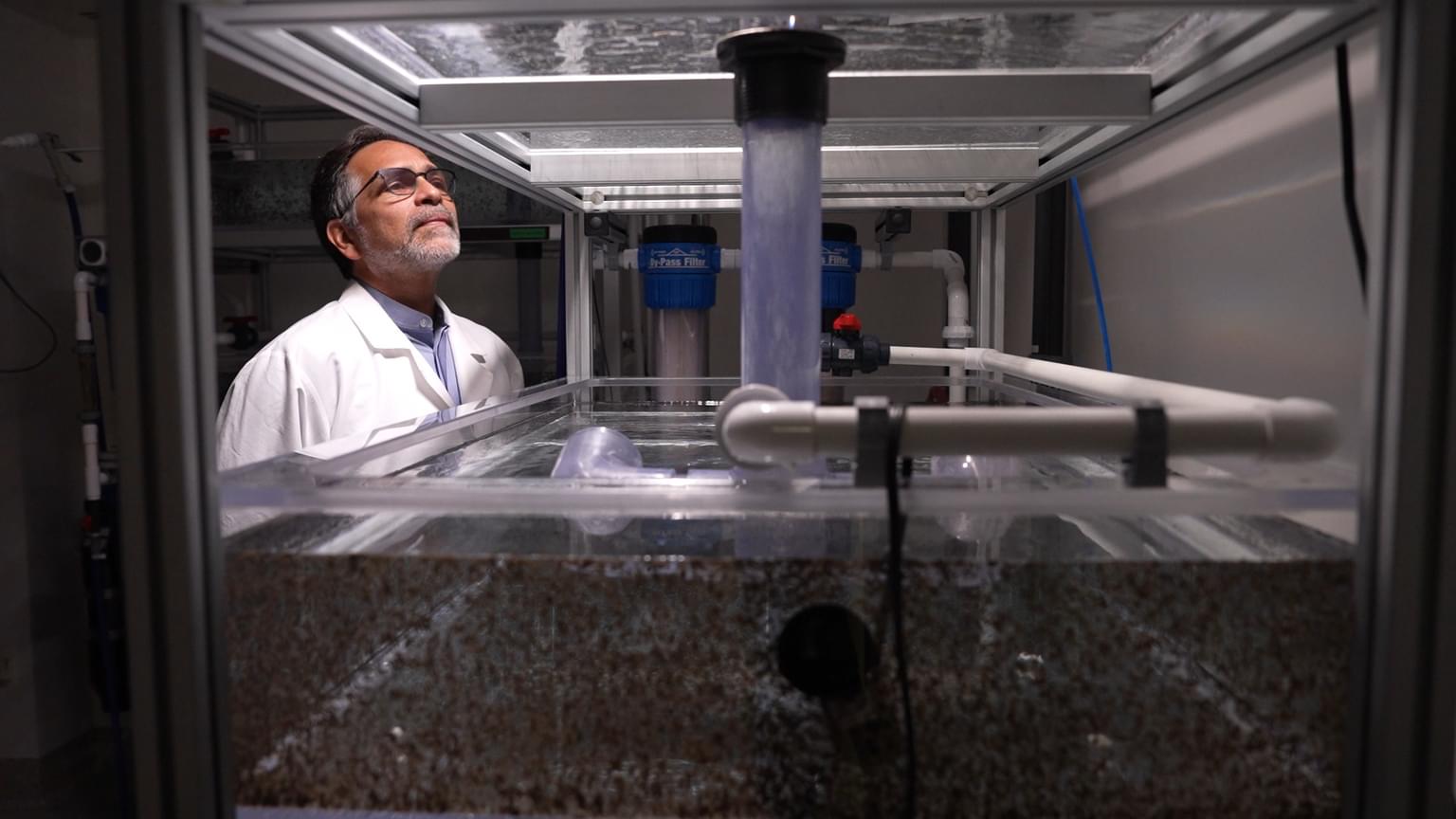By Anissa Anderson Orr
When she’s not in the lab studying the regenerative powers of zebrafish, Stowers Investigator Tatjana Piotrowski, PhD, enjoys exploring the trails around Kansas City with her family, or hiking remote mountain paths on vacation. While Piotrowski loves the busy and collaborative environment at the Stowers Institute, she also relishes getting off the grid. Nature regenerates her.
“You might meet three people in the whole week that you’re out there on a nature trek. That’s something I love very much,” she says.
Piotrowski credits her upbringing in the picturesque, medieval town of Herrenberg, near Germany’s Black Forest, for her love of the outdoors, and for sparking her interest in science.
“I grew up in nature,” she says. “The little town where I lived was surrounded by fields and orchards and creeks. We lived next to a forest, so I’d spend afternoons there after school. I guess it really made me interested in trying to understand the natural world and animals, and animal behavior. From early on, even in high school, I wanted to study animal behavior or zoology.”
Called to a scientific career, Piotrowski went on to earn her BS degree in biology and MA in zoology from the University of Tübingen, Germany. However, she performed her MA thesis work at the University of California, San Diego. It was at UCSD that she first started studying the anatomy and evolution of the nervous system of fishes. After returning to Germany, Piotrowski earned her doctorate at the Max Planck Institute for Developmental Biology, and then completed a fellowship at the National Institutes of Health’s Laboratory of Molecular Genetics in Bethesda, Maryland. In both labs she studied the genetics of zebrafish—organisms known for their transparent embryos that allow scientists to easily track development of tissues and organs.
Following her training, Piotrowski joined the faculty of the University of Utah School of Medicine. She joined the Stowers Institute in 2011 as an Associate Investigator, together with her husband, Stowers and Howard Hughes Medical Institute Investigator Alejandro Sánchez Alvarado, PhD. Today, her research focuses on the lateral line, a sensory organ in zebrafish, and the mechanisms that allow zebrafish hair cells to regenerate. It’s a field of research that offers growing insight into human development and disease.
When did you truly realize you wanted to be a scientist?
After high school, I was interested in both biology and geology. But I wasn’t sure which field I wanted to pursue. So, I went to San Francisco for a year to work as an au pair, taking care of two young boys. At the same time, I audited classes at the University of San Francisco—both biology and geology courses. I also took advantage of the university library to read scientific journals. I think that’s really when I realized I would love to do science myself, when I read all these studies that people have done. I fell in love with the idea that you could make discoveries and share them with others
And I have to say that it was a terrific year right after high school. It was very eye-opening, and made me more self-confident. For example, when I went to university after my return to Germany I did not hesitate to walk up to professors, knock on their doors, and ask them for advice. Without having had that year where I had to rely on myself, and live somewhere else where I didn’t know anybody, I probably wouldn’t be where I am today.
When did you become interested in zebrafish?
I began to work on zebrafish genetics and the evolution of the lateral line when I was a master’s student in Glenn Northcutt’s laboratory at the University of California San Diego. Whenever Northcutt would take a break, some other lab members and I would join him and have all these conversations about the latest scientific publications. I learned so much from those conversations. After that year, I was convinced that I wanted to pursue a career in science and study zebrafish in particular.

I went back to Germany to pursue my PhD in the laboratory of Christiane Nüsslein-Volhard, PhD, who would later win the Nobel Prize in Physiology or Medicine in 1995. I participated in one of the first large-scale screens for zebrafish mutations affecting embryonic development. During that time, almost everyone in the zebrafish field came through the lab to visit and see the screen. Students were encouraged to show their work to the visitors— often leaders in the field. That was very motivating to me as a student.
What direction is your research taking you now?
We’re trying to understand how sensory hair cells in the lateral line develop and how they regenerate after damage. These sensory hair cells are like hair cells that we have in our inner ears for hearing. However, in mammals, such as ourselves, these cells die from aging or after noise exposure, and they never regenerate. In contrast, in chickens, amphibians, reptiles, and fish, new hair cells are constantly generated.
We’re performing single cell expression analyses right now to see which genes are active in each cell. This allows us to determine which cell is talking to another cell to ensure that one cell turns into, for example, a hair cell, while the neighboring cell will be a support cell. All these decisions involve cells communicating with each other. Importantly, our studies will hopefully teach us how zebrafish hair cells regenerate, providing us with clues of how to trigger hair cell regeneration in mammals in the future.
What makes zebrafish so interesting to study?
The beauty of the zebrafish system is that we can watch this regenerative process happen in a live animal, which is not so easy to do in, for example, a mouse or a chicken. We can watch how a stem cell behaves under normal conditions. We can also manipulate genes, change the function of genes, and then watch the cells again and see how these genes influence the behavior of individual cells.
Watching these cells develop and regenerate in timelapse movies is really, incredibly beautiful. One always observes and discovers unexpected cell behaviors. That’s why research is so much fun, because you constantly see new things that nobody else has seen before.
What's it like having two scientists in the family?
It’s great because we can exchange experiences, and ask each other for advice. I don’t think we ever get bored talking with each other. We understand each other’s passion for science. If I wanted to go check on an experiment in the middle of the night, it would be OK. And vice versa.
On the other hand, when our kids were little (they’re now teens), they were sometimes a little annoyed when we had our science conversations. Sometimes they even thought we were fighting with each other, until we explained that we weren’t fighting over personal things. We were just having fun discussing science.
What do you like best about your job?
What’s so fascinating about science and being a scientist is that it’s a huge puzzle. And you’re trying to solve it a piece at a time.
My job is really a lot of fun because it is challenging but also rewarding. One constantly makes new observations that one has to put into the context of what’s known. Likewise, colleagues in the field publish their results and one has to see how your results fit into that. Do your colleague’s findings contradict your results, or add to them, or do they push the interpretation into a different direction? It’s like a detective story that never ends.




